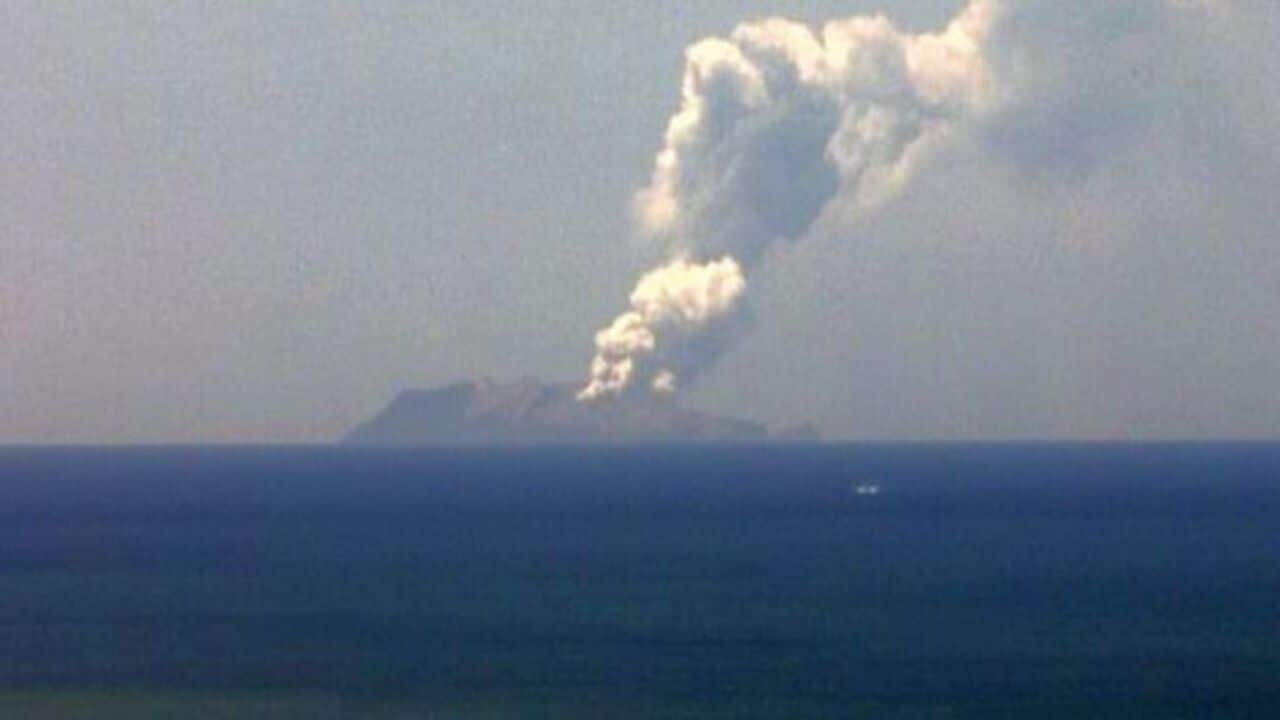In the aftermath of the deadly eruption on New Zealand's White Island, questions are being raised about why tourists were allowed on an active volcano that has been monitored closely for years.
- including New Zealanders and tourists from Australia, Britain, the US, China and Malaysia - are unaccounted for and presumed dead after the eruption of the Whakaari volcano.
New Zealand Prime Minister Jacinda Ardern said "there will be questions asked, that need to be answered ... by the appropriate authorities... it's an unpredictable live volcano". While national geological hazard monitoring system Geonet tracks the volcano's activity, the island is privately owned and it is up to tour operators to decide when to visit.
While national geological hazard monitoring system Geonet tracks the volcano's activity, the island is privately owned and it is up to tour operators to decide when to visit.

New Zealand Prime Minister Jacinda Ardern meets with first responders at the Whakatane Fire Station. Source: Getty
Geonet had put the volcano on level two, indicating minor volcanic unrest. It was on level one 1 ahead of its previous eruption in 2016.
White Island sits on the Pacific Ring of Fire, an area known for frequent earthquakes and volcanic eruptions, and is the emergent peak of a large submarine volcano that lays 48 kilometres offshore from Whakatane on the east coast of New Zealand's North Island. One of the tour operators, White Island Tours, said on its website - which has been taken down - that it operated during varying alert levels, but added that "passengers should be aware that there is always a risk of eruptive activity regardless of the alert level".
One of the tour operators, White Island Tours, said on its website - which has been taken down - that it operated during varying alert levels, but added that "passengers should be aware that there is always a risk of eruptive activity regardless of the alert level".

Whakaari erupted on Monday. Source: Getty
The website also stated that the tour company "follows a comprehensive safety plan which determines our activities on the island at the various levels."
Paul Quinn, chair of Ngati Awa Holdings which owns White Island Tours, told Radio New Zealand the heightened alert levels on the volcano over the last few weeks didn't meet its threshold for stopping operations.
"Level 3 and above we liaise more directly with GeoNet but level 2 is still within our operational guidelines," he said.
Tourists are only allowed to land on White Island as part of a tour group and are provided with hard hats and gas masks to protect against the sulphurous steam. Around 10,000 tourists annually visit White Island. Ross Dowling, tourism researcher at Edith Cowan University in Perth, said that "the number of tourists visiting active volcanoes is increasing globally as part of an increase in both geological tourism and adventure tourism.
Ross Dowling, tourism researcher at Edith Cowan University in Perth, said that "the number of tourists visiting active volcanoes is increasing globally as part of an increase in both geological tourism and adventure tourism.

White Island Tour operators rescuing people from the Island after the eruption. Source: Twitter / Michael Schade
"Part of the attraction is to visit an unpredictable natural environment and for most tourists they assume that they will be able to visit such dangerous sites in relative safety."
"White Island has been a disaster waiting to happen for many years," Ray Cas, emeritus professor at the School of Earth, Atmosphere and Environment at Monash University, told the Science Media Centre.
"Having visited it twice, I have always felt that it was too dangerous to allow the daily tour groups that visit the uninhabited island volcano by boat and helicopter," he added.
Vulcanologist Shane Cronin told Science Media Centre that "sudden, unheralded eruptions from volcanoes such as White Island can be expected at any time."
Magma was close to the surface, and the heat and gases formed hydrothermal systems.
"We know hydrothermal and so-called 'phreatic' eruptions can occur suddenly and with little or no warning because they are driven by the expansion of super-heated water into steam," he said.


